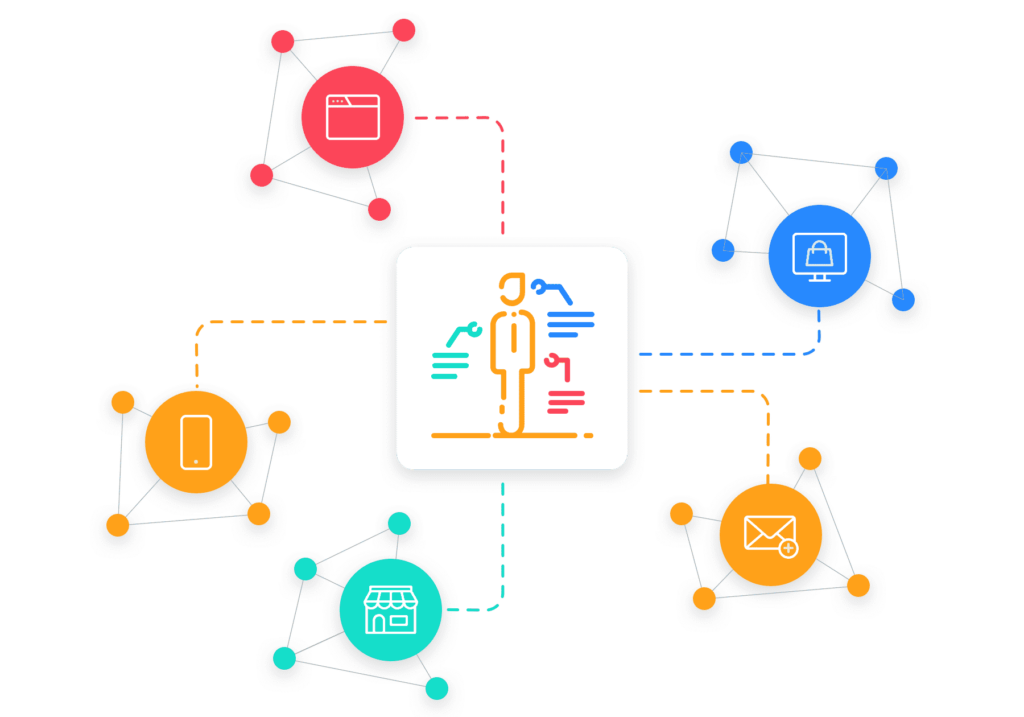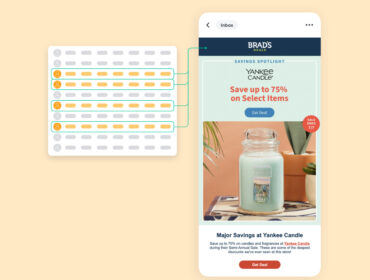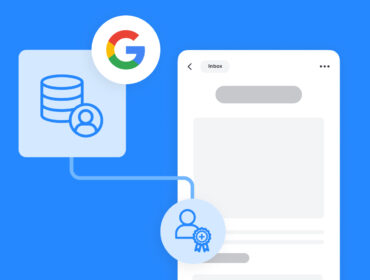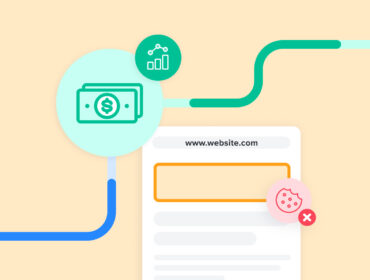Single customer view: What is it and why does it matter?
What is a single customer view?
A single customer view, also known as a 360-degree view of the customer or a unified customer view, is a comprehensive collection of data gathered from various channels that’s connected to one individual. It provides a cohesive overview of customer behaviors, so you can better understand what your audiences need and how to engage them with personalized experiences.

A single customer view includes, but is not limited to, first-party data collected from the following sources:
- Websites
- Mobile apps
- Email subscriptions
- Brick and mortar stores
- Social networks
- Customer support teams
- Sales reps
Why does it matter?
Google ran a study to see how many channels a woman used to buy a pair of jeans. The result? She conducted research for 73 days and interacted with more than 250 touch points — including blogs, YouTube videos, and retailer sites — before finally making a purchase. Still, this isn’t a unique experience. According to Google, buyers can spread their path to purchase across 500 touch points or more.
Without it, the people who engage with these touch points and the resulting data points exist as separate identities and disconnected data points across several platforms, apps, and databases. Without a unified customer view, businesses cannot efficiently and effectively market their products and services to their existing and prospective customers.
However, with a unified customer view, businesses can reconcile all these data points into one unified identity — creating a complete picture and understanding of their individual consumers or a single customer view. Let’s explore this further.
What are the benefits of a single customer view?
A unified customer view can be the foundation of a solid and efficient marketing strategy. With a single customer view to guide them, businesses can:
- Personalize marketing campaigns across channels and platforms: Reach your audience on their preferred channels with their consent, like email or SMS, and meet them on their favorite platforms with messaging that speaks to their interests and needs.
- Break down silos between teams. Departments across an organization can easily access the same customer data from one place to inform strategies.
- Reduce duplicate and low-quality data. By storing data in one centralized platform, it’s easier for businesses to organize, clean, and keep data up to date.
- Create unique audience segments. Build and target specific groups of customers based on demographics, behaviors, content preferences, and stages of the buyer journey.
- Improve customer service. With a clear view of each customer’s interactions and habits, support reps can better deliver value at each touchpoint and anticipate people’s needs.
- Improve measurement and attribution. It enables businesses to more accurately measure the impact of their marketing and advertising efforts on their revenue.
- Optimize advertising spend. With improved measurement and attribution, businesses can optimize their advertising spend or even redistribute their budgets to channels, formats, or approaches that move the needle on their business.
How does identity resolution help?
Identity resolution is the process of matching specific identifiers — like email addresses, device IDs, and usernames — to individual customers. It is what makes a single customer view possible.
Identity resolution is complicated now that customers are using more devices than ever. Furthermore, Google is phasing out third-party cookies which businesses long for relied on identity and retargeting. That’s why identity resolution is critical to creating a single customer view. With identity resolution, you gain the necessary data to build a comprehensive understanding of each customer, attributing information from different platforms to individual people.
How can you create a single customer view?
Creating a single customer view isn’t so hard if you have the right tools and strategies at your disposal.
To get started, you can:
- Collect customer data across platforms. You can use a Customer Data Platform (CDP) to gather and sync data from each customer touchpoint.
- Integrate data from legacy systems. Don’t forget to include data from channels that aren’t connected to your CDP. This might include your call center or an outdated marketing cloud, for instance.
- Build an identity graph. An identity graph combines anonymous and known customer data for identity resolution. LiveIntent’s proprietary identity graph, for instance, pulls from millions of unique data points to turn anonymous website traffic into authenticated customer data.
Your business needs a unified customer view
Even if your business doesn’t sell jeans, chances are your customers use a range of channels, devices, and touch points along their path to purchase. So if you want to engage them, you need a way to gather and manage all that data in one place. Only with a single customer view can you truly understand how your customers behave and how teams across your organization can reach them with high-quality, personalized experiences.
If you’d like to know more about building a single customer view, how it can help with segmentation and its relationship to identity resolution, check out our identity resolution content.


